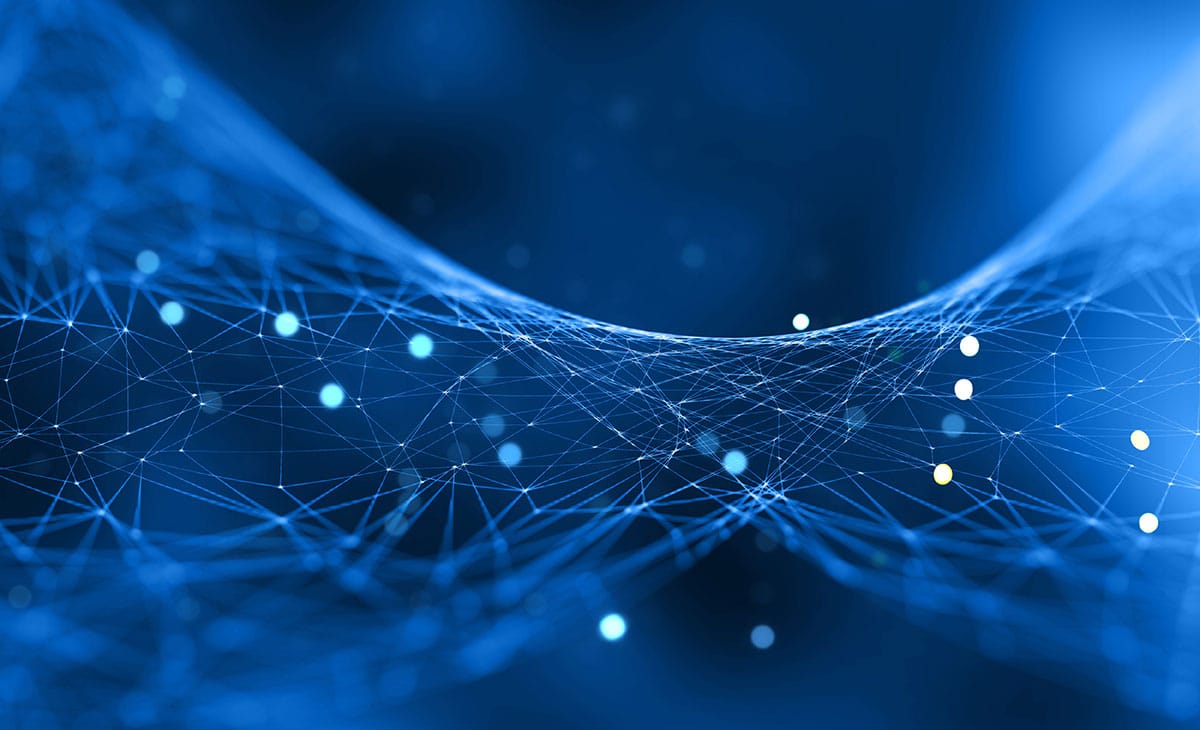A review of available Internet of Things products and their solutions for lift companies.

This article was first presented by the Online Symposium on Lift and Escalator Technologies, September 23-25, 2020, by the University of Northampton, U.K.; for more information, visit www.liftsymposium.org.
Keywords: Internet of Things, Machine to Machine, Machine Learning, Artificial Intelligence.
Abstract. Through slick videos, magazines, and advertisements, IOT, ML, AI, and M2M have been promoted as wonderful solutions for the lift and escalator industry. This paper reviews the available IoT product offerings by capabilities and evaluates their efficacy based upon current technology. The review includes what is now possible, what is not now possible and what might be possible soon. Solutions available to multinational lift companies, and those available to regional and local lift enterprises, are also reviewed.
Introduction
IoT, the Internet of Things, has been promoted as the next big thing for the lift industry. Articles about IoT appear in many types of publications. Commercials appear on television touting the wonders of cloud computing and Machine Learning (ML). The November 2019 edition of ELEVATOR WORLD included an article titled “The IOEE: Connecting Equipment, Customers and Passengers.” In addition to explaining Schindler’s IoT product, it also describes the many benefits that IoT, ML, and digitization will bring to the lift industry. There is even a magazine, IoT & Elevators, published by Nayar Systems, an IoT company. The magazine is filled with interesting articles on AI, ML and smart and connected cities. The claims in these documents and commercials are not hype; they are true. However, implementing these concepts is not simple.
Because of all the enthusiasm associated with IoT, many product offerings now exist in the lift industry. What these products can and cannot do will be explored.
IoT and Maintenance Types
IoT
IoT is defined by Wikipedia as “a system of interrelated computing devices, mechanical and digital machines, objects, animals or people that are provided with unique identifiers (UIDs) and the ability to transfer data over a network without requiring human-to-human or human-to-computer interaction.”[1] An example of an IoT device would be a temperature sensor in a lift machine room. The machine room temperature could be viewed on a PC or smartphone.
Maintenance Types
There are several types of lift maintenance where IoT devices can be applied. They are as follows:
- Breakdown maintenance. This type of lift maintenance involves returning a lift to service after it has broken down. Breakdown maintenance is often referred to as reactive maintenance.
- Preventive maintenance (PM). This type of maintenance is regularly performed on a lift or piece of equipment to reduce the likelihood of a breakdown.[2]
- Usage-based maintenance. This is a maintenance strategy based on how much use an asset has experienced. For example, change the oil of a car engine after every 10,000 km of use.
- Condition-based maintenance (CBM). This is a maintenance method that monitors the condition of critical components or the entire asset to determine what maintenance is to be performed and when it should be performed.[2]
- Task-based maintenance (TBM). TBM is an analysis method that reviews existing PM plans and weeds out duplications and identifies missing tasks. At the conclusion of the analysis, a list of tasks is developed that is then used for future maintenance visits.[3]
- Predictive maintenance. Predictive maintenance uses ML to issue a recommendation to replace a part or perform a service on a lift or escalator before a breakdown occurs.[4]
- Prescriptive maintenance. This method is a totally automated form of predictive maintenance where service tickets are computer-generated for every service visit using ML.[4]
IoT Goals and Objectives
There are two perspectives on the goals and objectives of IoT products: those of the building owner or manager, and those of the lift and escalator maintenance provider.
Building Owner/Manager’s Perspective
Individuals who have had extensive contact with building owners and managers have found that the owners and managers want three things[5, 6]:
- The ability to know which lifts are in operation.
- To be notified when a lift breakdown occurs.
- If a lift has broken down, to know if it is occupied.
Whether IoT devices are installed or not, building operators want all their vertical-transportation equipment to run trouble-free.
Lift Maintenance Provider’s Perspective
Maintenance providers have two objectives[7]:
- Customer satisfaction. If uptime can be increased, lifts and escalators run smoothly, entrapments are reduced and customers will be more satisfied.
- Operational efficiency. If the right maintenance tasks are performed at the right time, then efficiency will be increased. The reduction of callbacks also reduces costs.
Accomplishing these objectives will permit maintenance providers to compete based on value and quality, rather than on price.
IoT Products
There are many I0T products available in the market. Some products are available to all buyers. The products available from the multinationals are typically available to their present and future clients, not to competitors. The products reviewed represent a cross-sectional sample of the products available. The products are neither named nor referenced. In each case the review is based on the product manufacturer’s published literature. This review will try to be objective and should not be viewed as either an endorsement or negative assessment.
Product A, Industrial Router
Product A is an industrial router that connects to its virtual private network (VPN). The router is available in two versions, wired and wireless. It is described as an Industrial Internet of Things (IIoT) gateway and is a machine-to-machine (M2M) device. The product can push data to cloud services, such as Microsoft Azure or Amazon Web Services. However, once the data is in the cloud, it must be converted to meaningful information by data scientists and domain experts.
Product B, Remote Monitoring System
Product B is a remote monitoring system that graphicly displays the position, motion and door status of the lifts in a building. The graphic data can be viewed on a PC or smartphone. Additionally, this product can issue alerts via email or text messages if there is a problem with the lifts. This product appears to be designed for building management professionals. It meets the three requirements wanted by building managers described above in Section Building Owner/Manager’s Perspective. This product can also provide reports that can be used for usage-based maintenance.
A read-only interface with the lift controller is required.
Product C, Condition-Based Monitoring
Product C uses an accelerometer to monitor the following: travel, ride quality, door operation, car load, levelling, shaft efficiency, number of trips, duty cycles and the condition of traction sheaves. Both usage-based and condition-based maintenance are possible with this product. The product is connected to a cloud and does some processing there. The data sent to the cloud makes the use of ML possible.
The product appears to be designed for lift maintenance providers. It is not connected electrically to the lift, making it totally secure.
Product D, Modular Remote Monitoring with Command and Control
This product is a modular remote monitoring system that has several optional components. The base module consists of a cellular modem located in the machine room and a car-top module with an accelerometer. The car-top module is connected to two of the car call buttons in the car operating panel.
The accelerometer can monitor car and door movements. Movement levels are recorded. If there is a lower level of car movement than normal, the car-top unit will send the lift on a test run using the connections to the car call buttons. If the test run is not successful, an alert is sent.
This product can also be connected to compatible light curtains and emergency telephones. The light curtain and phone data are also collected, making the unit more powerful.
An optional I/O board can be connected to the lift controller. This can be used to reset the controller CPU and report such information as “car out of service.” Both usage-based and condition-based maintenance are possible with this product.
The product is connected to a cloud and does some processing there. The data sent to the cloud makes the use of ML possible.
The product appears to be designed for lift maintenance providers.
Any unit with command-and-control features is inherently more vulnerable to hacking than read-only of isolated systems.
Products of the Western Multinational Lift Companies
Otis, TKE, Schindler and KONE have all announced IoT products. They have also partnered with major ML companies, such as Microsoft, GE Predix and IBM Watson. Their products consist of routers or cellular modems connected to controllers, sensor packages or both. These connections allow them to gather large quantities of data. Their partners can then help develop the data acquisition, processing and storage architecture, as well as provide the cloud processing and ML software to process the collected data. However, these companies must develop ML algorithms needed for predictive and prescriptive maintenance. These algorithms must be developed by teams made up of data scientists and domain experts.[8] The efficacy of these products will depend upon the outputs from these teams. These products appear to be components of premium service offerings.
Conclusions
None of the products reviewed deliver all the potential benefits of ML, AI or IoT. However, all deliver some of these benefits. Each delivers different benefits at different price levels. None of these products is right for everyone. All are, most likely, ideal for someone.
All the reviewed products are works in progress. All should improve in time. ML and all learning should lead to improvement.
Because there are so many impressive articles, books and PowerPoint presentations touting the benefits of IoT, one must be cautious when selecting an IoT product. One must first decide which IoT features are needed. Then, one should ask for live demonstrations of the proposed solution. Anything, no matter how bad, can be made to look fantastic using a PowerPoint. A live demonstration of a product should usually be closer to reality than a presentation.
When IoT reaches its full potential, it will seem like magic. It is in the process of forever changing the lift industry.
References
[1] Internet of Things Available from: https://en.wikipedia.org/wiki/Internet_of_things Last accessed Maintenance on: 6 February 2020
[2] Preventive Maintenance Available from: https://www.fiixsoftware.com/maintenance-strategies/preventative-maintenance/ Last accessed: 6 February 2020
[3] Task-Based Maintenance Available from: https://www.armsreliability.com/page/services/our-methodology/task-based-maintenance-tbm-analysis Last accessed on: 6 February 2020
[4] The Evolution of Maintenance Available from: https://www.ibm.com/blogs/internet-of-things/maintenance-evolution-prescriptive/ Last accessed on: 7 February 2020
[5] Discussions with Richard Peters, Peters Research, September 2019
[6] Discussions with Jeff Buntin, TKE, December 2019
[7] Smith, R (2019) TKE’s Internet of Things CIO Applications 8 April 2019 p28.
[8] Davenport, T. Big Data @ Work. Boston: Harvard Business School Press (2014)
Get more of Elevator World. Sign up for our free e-newsletter.










